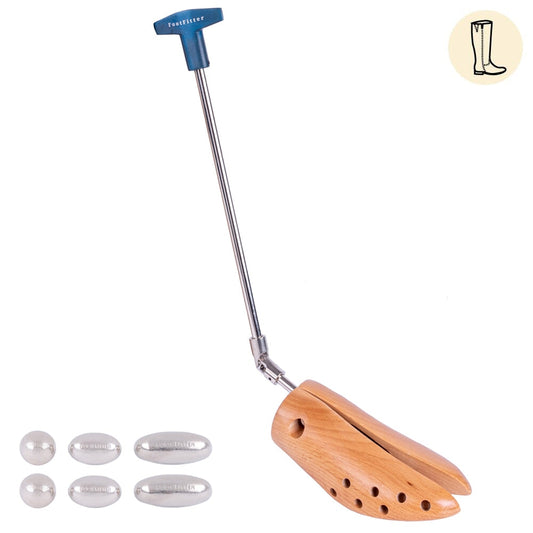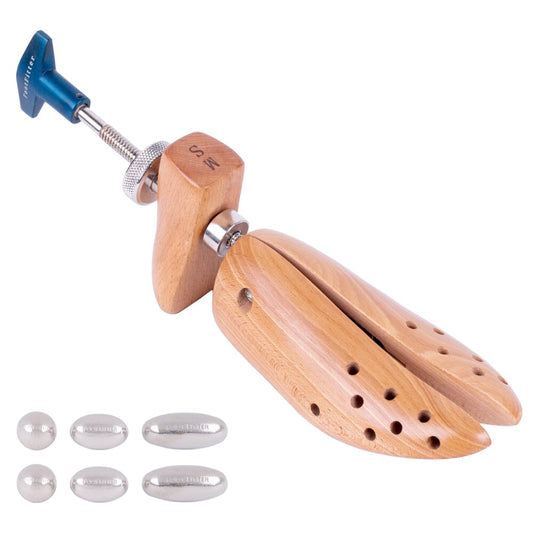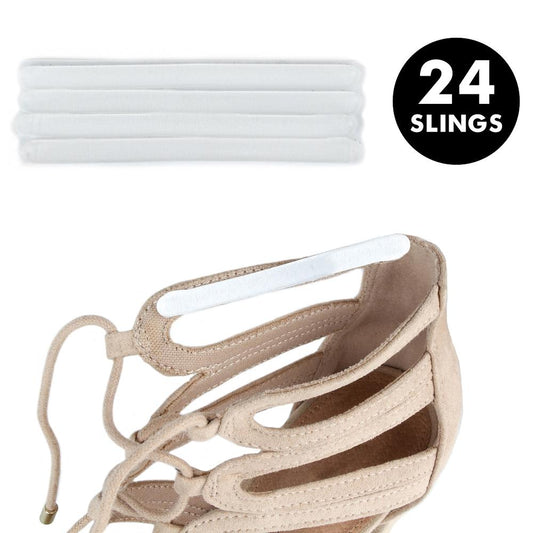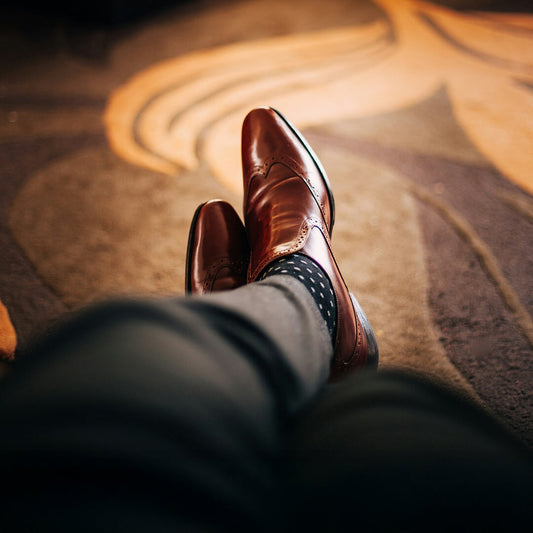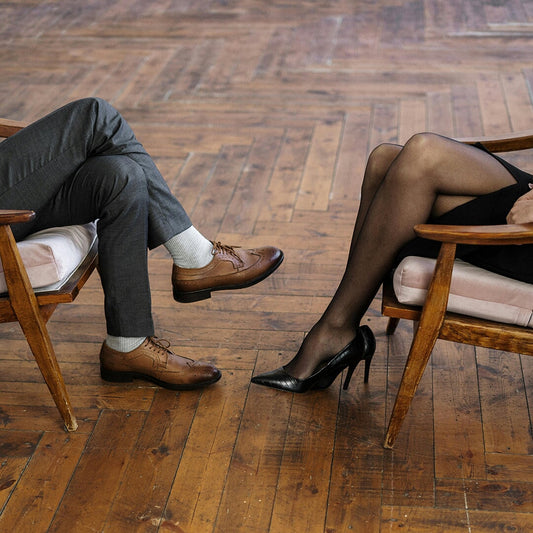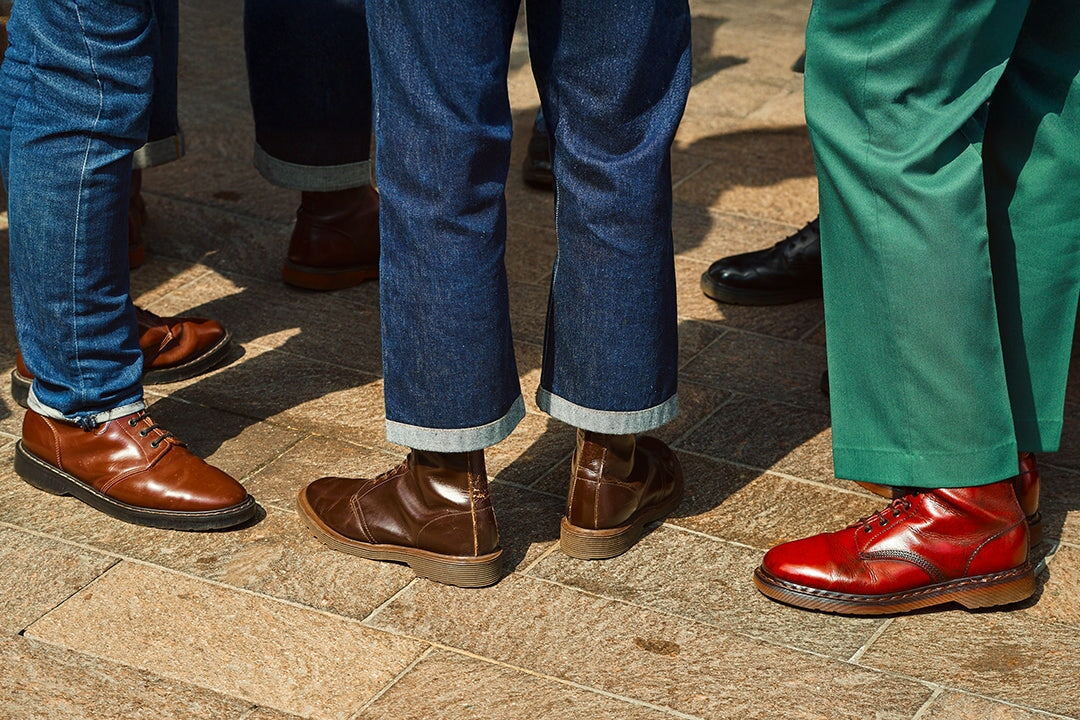
How to Tell If Shoes Are Too Big, Too Small or Fit Just Right
Share
When it comes to shoes, it’s common to struggle with a fluctuating size.
If you’re typically a size 7 but are struggling in the shoe store to squeeze into a size 8 or are comfortably strutting through the aisles in a size 6, you may be losing faith in shoe sizing at all. However, the truth is your shoe size only accounts for half of the picture.
After all, your numerical shoe size, ranging from around four to 14, only accommodates the length of your foot.
Meaning, if you have narrow or wide feet, certain styles of shoes may be unnecessarily pushing you up or down a size.
And, while quickly running into the shoe store to grab your size may be more convenient than wasting time trying multiple pairs on, you may be hurting yourself in the long run.
Wearing shoes that are too big or too small can cause a variety of health problems including issues like blisters and bunions.
Sticking in the shoe store long enough to try on shoes is a good first step. However, there are a few more factors to consider before you head to the cashier.
FootFitter is here to help. Check out our tips to find the perfect fit before purchase.
How to tell if shoes are too big

Apostolos Vamvouras via Pexels
The easiest way to tell if shoes are too big is to try them on and walk around the store.
Putting shoes on
If you’re trying on sneakers or dress shoes, the first tell is in the laces. If your feet are only comfortable when you pull the laces extra tight, the shoes are likely too wide for you.
Another tip when you first put dress shoes on is to try a finger test. If you can fit more than one finger behind your heel with your toes touching the top of the shoe, the shoes are too long for you.
When it comes to heels, you should have less room to spare. If your feet are comfortably pushed into the front of your pumps, you shouldn’t have more than 1 cm between your shoes and your skin. If your heels are popping out of the back, they are too long for you.
Walking in potential shoes
Next comes the walking portion of the process. If your feet slide back and forth while you walk, the shoes are too big in length and you may consider going down a half or full size.
However, if your feet are sliding side to side, the shoes are too wide for you. Downsizing in length with wide shoes may cause pain and injury to your toes and isn’t always the right solution.
Yet, neither problem is a complete death sentence for the style you’re attempting to achieve.
When it comes to heels that are only slightly too big, adding heel grips to the back of your favorite stilettos will add just enough extra cushion to both avoid chaffing and add stability by providing a snugger fit. Likewise, insoles offer a similar effect for sneakers and dress shoes.
If straps are the problem instead and your heels fit but their backing seems to keep slipping down, adding gel adhesive slings will keep your straps in place. This allows you to avoid trading your coveted pair for a tighter size that will cut your skin and leave marks.
The difference between tight and snug

It’s important to understand the difference between shoes that are too tight and shoes that are snug.
Too tight
Shoes that are too tight in length are pretty obvious because they painfully smash your toes in the toe box area of your shoe or rub uncomfortably against your heels.
Luckily, it’s also not difficult to tell if shoes are too tight in width because you likely won’t be able to squeeze them on.
Snug shoes
On the other hand, some shoes may be true to your typical size but appear smaller in the store because of their material or style. This is the pair you can pull on but feels somewhat stiff or extra form-fitting.
In reality, some shoes are made to fit snug in the store but loosen with wear or the help of a few tools.
For example, when it comes to leather shoes, you should choose the pair that’s on the snug side. While it may seem more comfortable to get a pair with some extra room because dress shoes start out stiff, this will actually add to your discomfort over time as they relax and stretch.
In the meantime, there are tools you can use to make breaking in your shoes more comfortable. Shoe stretchers are ideal to slightly widen or lengthen snug shoes and reduce the break-in period.
Dress shoes aren’t the only pair in your closet that comes in leather. Cowboy boots also fit snug at first. While you can double up your socks to get some relief during the break-in period, boot stretchers will do the work for you and allow you to target specific spots without requiring wear.
The perfect fit

Alas, now that you have tips to answer how to tell if shoes are too big or too small, it brings us to the final question. What signifies the perfect fit? Here are our notes to sum it up.
Shoes with a good fit provide adequate room in the toe area for wiggling but not sliding. Moreover, they are snug and offer proper ankle and knee support without chaffing your heels or causing blisters.
When your feet are between sizes, using tools to help brave the break in process or slightly alter the fit will create the ideal, personalized shoe.

